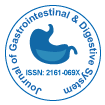Unsere Gruppe organisiert über 3000 globale Konferenzreihen Jährliche Veranstaltungen in den USA, Europa und anderen Ländern. Asien mit Unterstützung von 1000 weiteren wissenschaftlichen Gesellschaften und veröffentlicht über 700 Open Access Zeitschriften, die über 50.000 bedeutende Persönlichkeiten und renommierte Wissenschaftler als Redaktionsmitglieder enthalten.
Open-Access-Zeitschriften gewinnen mehr Leser und Zitierungen
700 Zeitschriften und 15.000.000 Leser Jede Zeitschrift erhält mehr als 25.000 Leser
Indiziert in
- Index Copernicus
- Google Scholar
- Sherpa Romeo
- Öffnen Sie das J-Tor
- Genamics JournalSeek
- Nationale Wissensinfrastruktur Chinas (CNKI)
- Elektronische Zeitschriftenbibliothek
- RefSeek
- Hamdard-Universität
- EBSCO AZ
- OCLC – WorldCat
- SWB Online-Katalog
- Virtuelle Bibliothek für Biologie (vifabio)
- Publons
- Genfer Stiftung für medizinische Ausbildung und Forschung
- Euro-Pub
- ICMJE
Nützliche Links
Open-Access-Zeitschriften
Teile diese Seite
Abstrakt
Novel Dual Magnetic Drug Targeting and Hyperthermia Therapy in Hepatocellular Carcinoma with Thermosensitive Polymer-Coated Nanoparticles
Chang PEJ, Purushotham S, Rumpel H, Kee IHC, Ng RTH, Chow PKH, Ramanujan RV and Tan CK
Background: Magnetic drug targeting (MDT) uses magnetic fields to localize magnetic nanoparticles (MNP) to tumor. Once localized, applying an alternating magnetic field (AMF) to the MNPs generates heat energy. Poly-N-isopropylacrylamide (PNIPA) is a thermosensitive polymer that contracts when heated, releasing any drugs which are bound to it. Utilizing these properties, MNP coated with PNIPA polymer on to which doxorubicin is loaded can be localized to hepatocellular carcinoma (HCC) with an external magnetic field. Application of an AMF will then generate localized magnetic hyperthermia (MH) within the tumor, thus releasing bound doxorubicin. This study explores this novel drug delivery model which can be used for targeted dual therapy (MDT and MH) of HCC.
Aim: To demonstrate that doxorubicin-loaded-PNIPA-coated-MNP can be delivered intra-arterially to target HCC in a rat model and that heat is generated and doxorubicin is released when an AMF is applied.
Methods: Morris hepatoma cells are implanted into the livers of buffalo rats. HCC development is confirmed on MRI using a specially-constructed rat-MRI coil. 0.5 ml of doxorubicin-loaded-PNIPA-coated-MNP solution is injected into the hepatic artery and localization of MNP in HCC is confirmed with MRI. Rats are sacrificed for histology of liver and other organs. AMF is applied to doxorubicin-loaded-PNIPA-coated-MNP solution and the temperature measured to demonstrate local hyperthermia in vitro. The amount of doxorubicin released is measured by spectrophotometry.
Results: Successful intra-arterial delivery of MNP was confirmed on post-injection MRI. On histology, iron particles were seen in HCC but not in normal liver or other organs. When AMF was applied, temperature of the suspension reached the target temperature of 42°C within 5 minutes and remained within hyperthermia range(42°C-48°C) for 15 minutes. During this period of hyperthermia, 4.7% (~71 μg) of loaded doxorubicin was released.
Conclusions: We have demonstrated in a rat model the feasibility of intra-arterial doxorubicin-loaded-PNIPA-coated-MNP for synergistic dual therapy of HCC using targeted hyperthermia and doxorubicin.
Zeitschriften nach Themen
- Allgemeine Wissenschaft
- Biochemie
- Chemie
- Genetik und Molekularbiologie
- Geologie und Geowissenschaften
- Immunologie und Mikrobiologie
- Klinische Wissenschaften
- Krankenpflege und Gesundheitsfürsorge
- Landwirtschaft und Aquakultur
- Lebensmittel & Ernährung
- Maschinenbau
- Materialwissenschaften
- Medizinische Wissenschaften
- Pharmazeutische Wissenschaften
- Physik
- Sozial- und Politikwissenschaften
- Umweltwissenschaften
- Veterinärwissenschaften
Klinische und medizinische Fachzeitschriften
- Anästhesiologie
- Augenheilkunde
- Betrieb
- Dermatologie
- Diabetes und Endokrinologie
- Gastroenterologie
- Genetik
- Gesundheitspflege
- Immunologie
- Infektionskrankheiten
- Kardiologie
- Klinische Forschung
- Medizin
- Mikrobiologie
- Molekularbiologie
- Neurologie
- Onkologie
- Pädiatrie
- Pathologie
- Pflege
- Toxikologie
- Zahnheilkunde

 English
English  Spanish
Spanish  Chinese
Chinese  Russian
Russian  French
French  Japanese
Japanese  Portuguese
Portuguese  Hindi
Hindi